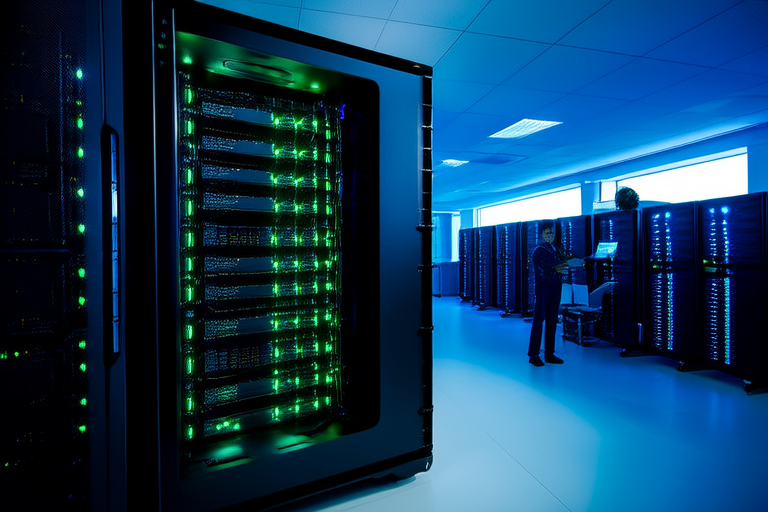“`html
The Future of AI: How Machine Learning is Reshaping Industries
Artificial Intelligence (AI) and Machine Learning (ML) are rapidly evolving technologies that are becoming increasingly integrated into various industries. This article explores how these technologies are transforming sectors such as healthcare, finance, manufacturing, transportation, and entertainment. By understanding the principles and applications of ML, we can appreciate its profound impact on job roles, processes, and business models.
Introduction
Artificial Intelligence refers to the simulation of human intelligence in machines that are programmed to think, learn, and perform tasks. Machine Learning, a subset of AI, involves training algorithms to make predictions or decisions based on data. As these technologies continue to evolve, they are reshaping industries by automating routine tasks, enhancing decision-making, and driving innovation.
The significance of understanding how ML is reshaping different sectors cannot be overstated. From improving patient outcomes in healthcare to optimizing financial portfolios, ML is revolutionizing the way businesses operate and interact with customers.
The Role of Machine Learning in Industry Transformation
Machine Learning encompasses several types of learning, including supervised, unsupervised, and reinforcement learning. Supervised learning involves training algorithms on labeled data, while unsupervised learning deals with unlabeled data. Reinforcement learning, on the other hand, focuses on training agents to make sequential decisions based on feedback.
In healthcare, ML is used for diagnosing diseases, predicting patient outcomes, and personalizing treatment plans. For instance, IBM Watson Health uses ML to analyze medical records and provide clinicians with evidence-based recommendations. In finance, ML algorithms are employed for fraud detection, risk management, and algorithmic trading. Companies like JPMorgan Chase leverage ML to detect fraudulent transactions in real-time.
In manufacturing, ML optimizes production processes, reduces downtime, and improves quality control. Toyota, for example, uses ML to predict equipment failures and schedule maintenance. In transportation, autonomous vehicles rely on ML to navigate roads safely. Tesla’s Autopilot system utilizes ML to improve driving performance and safety. In entertainment, ML powers recommendation engines that personalize content for users. Netflix and Spotify use ML to suggest movies, shows, and songs based on user preferences.
The impact of ML on job roles, processes, and business models within these industries is significant. While some jobs may become obsolete, new roles will emerge that require skills in data science, AI, and ML. Businesses that adopt ML early will gain a competitive advantage by improving efficiency, reducing costs, and enhancing customer satisfaction.
Key Technologies Driving AI and ML Innovation
Advancements in data processing, algorithms, and hardware are enabling more powerful and efficient AI systems. Data processing technologies, such as Apache Spark and Hadoop, facilitate the storage and analysis of large datasets. Algorithms, like neural networks and decision trees, enable machines to learn from data and make predictions. Hardware innovations, including GPUs and TPUs, accelerate computation and enable real-time processing.
Significant milestones in AI research have had a profound effect on industry adoption. Deep learning, a subfield of ML, has enabled machines to recognize patterns in complex data, leading to breakthroughs in image and speech recognition. AlphaGo, developed by Google DeepMind, defeated the world champion in the game of Go, demonstrating the potential of AI in strategic decision-making.
Challenges and Ethical Considerations
Organizations adopting AI and ML face common challenges, including data privacy concerns, bias in algorithms, and the need for skilled professionals. Data privacy regulations, such as GDPR, impose strict requirements on how organizations collect, store, and use personal data. Bias in algorithms can lead to unfair treatment of certain groups, undermining trust and credibility. The demand for skilled professionals in AI and ML exceeds supply, creating a talent shortage.
Ethical considerations surrounding AI include transparency, accountability, and fairness. Transparency ensures that decision-making processes are understandable and explainable. Accountability holds individuals and organizations responsible for the actions of AI systems. Fairness ensures that AI systems treat all individuals equally, without discrimination.
Companies like Salesforce have successfully navigated these challenges by implementing robust data governance policies, conducting regular audits, and fostering a culture of ethical AI. Salesforce’s Einstein AI platform provides customers with personalized recommendations and insights, while ensuring data privacy and fairness.
Future Outlook and Predictions
The future trajectory of AI and ML includes potential new applications and improvements in existing technologies. Edge computing, which brings computation closer to the source of data, will enable real-time processing and reduce latency. Autonomous systems, such as drones and robots, will automate tasks in industries like logistics and agriculture. The integration of AI with other cutting-edge technologies, like quantum computing and blockchain, will unlock new possibilities.
Emerging trends, such as the Internet of Things (IoT), will further enhance the capabilities of AI systems. IoT devices generate vast amounts of data, which can be analyzed by AI to optimize operations and improve customer experiences. Over the next decade, industries will continue to evolve as a result of continued AI innovation. Healthcare will see more personalized medicine, finance will experience greater automation, and transportation will become more autonomous.
Conclusion
Machine Learning is transforming industries by automating routine tasks, enhancing decision-making, and driving innovation. From healthcare to entertainment, ML is reshaping job roles, processes, and business models. The key points discussed in this article highlight the transformative power of ML and its potential to create new opportunities for growth and innovation.
We encourage readers to stay informed about the latest developments in AI and consider how they might apply these technologies in their own fields. By embracing AI and ML, businesses can gain a competitive advantage and thrive in an increasingly digital world.
“`


